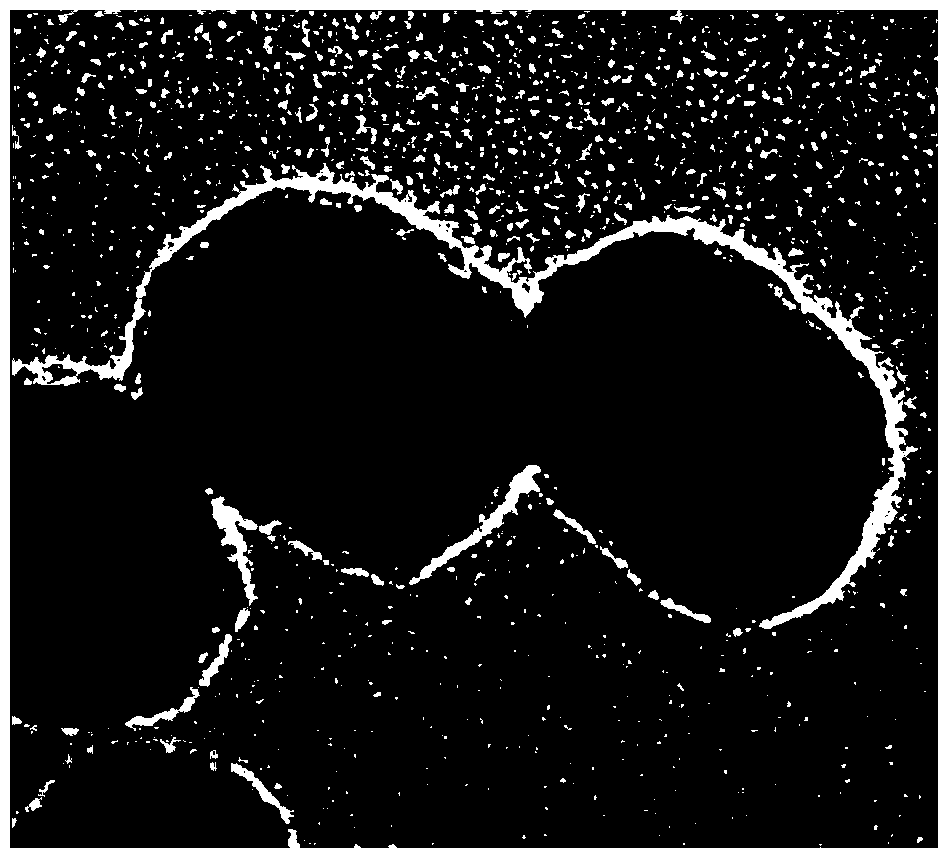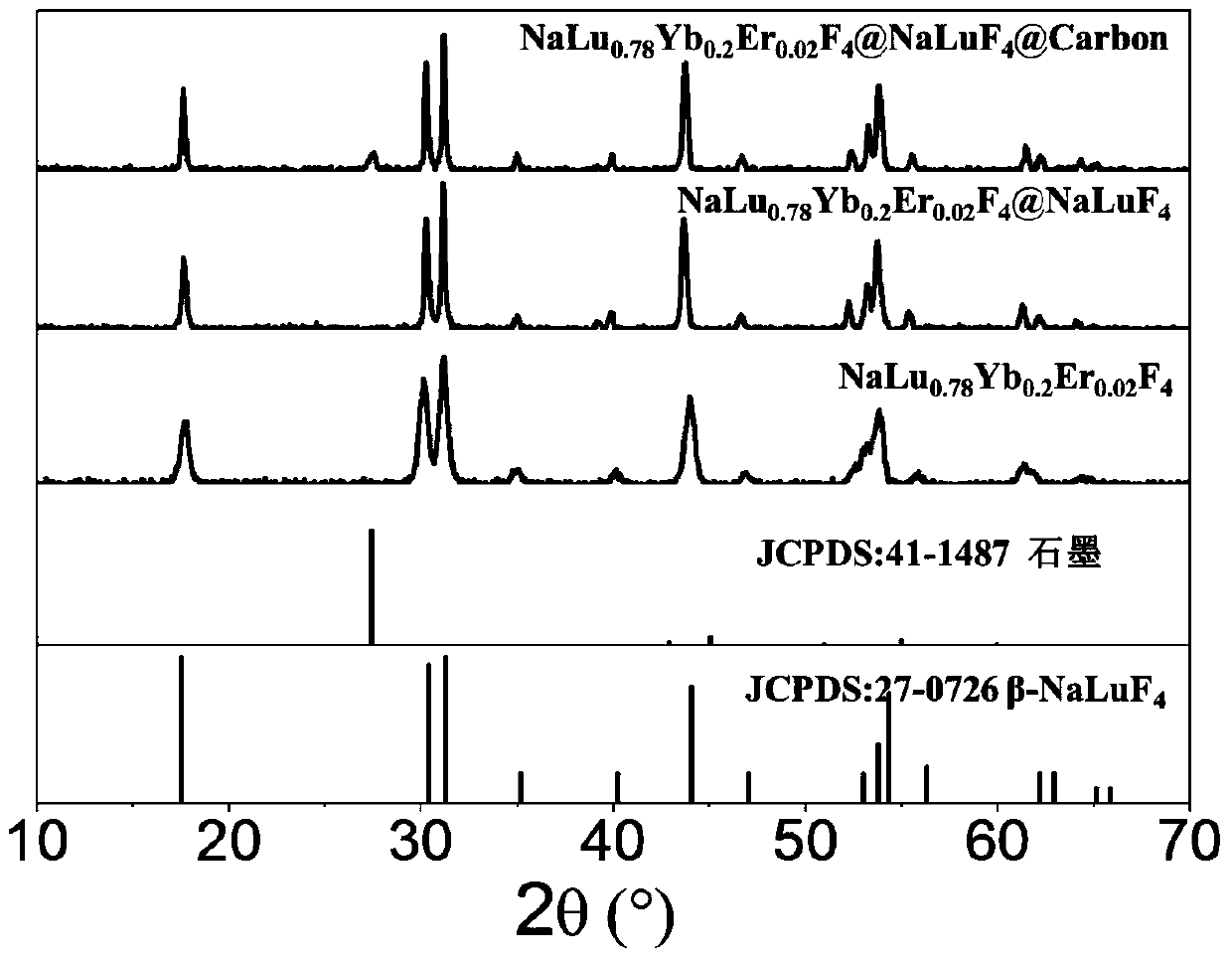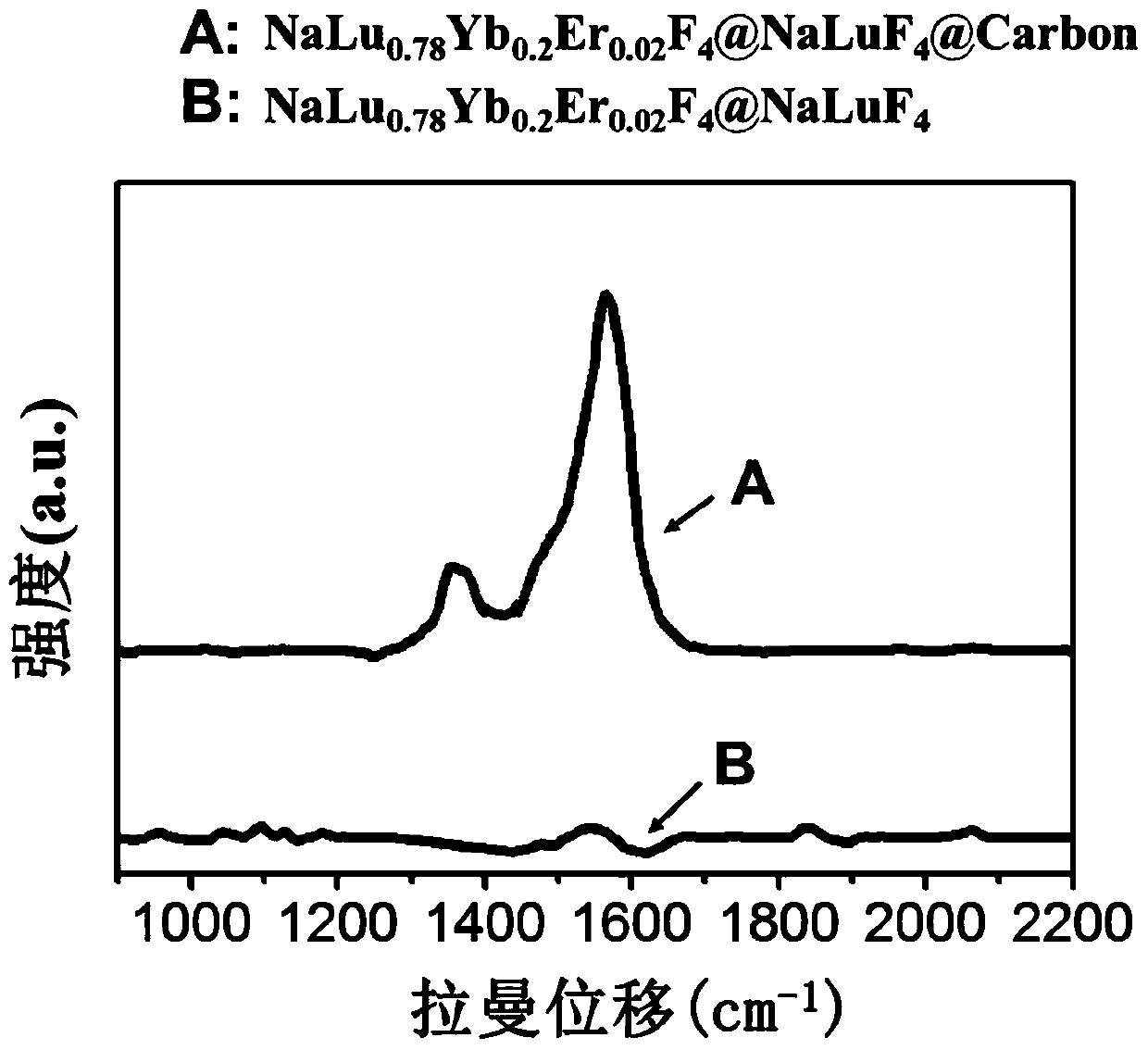A photoluminescence-photothermal nanocomposite structure material and its preparation method and application
A nano-composite, structural material technology, applied in luminescent/biological dyeing preparations, wave energy or particle radiation treatment materials, pharmaceutical formulations, etc., can solve the problems of difficult biological optical temperature detection, toxicity, high price, etc., and achieve major applications Prospect, low side effects, high precision effects
- Summary
- Abstract
- Description
- Claims
- Application Information
AI Technical Summary
Problems solved by technology
Method used
Image
Examples
Embodiment 1
[0049] Example 1: NaLu 0.78 Yb 0.2 Er 0.02 f 4 @NaLuF 4 Synthesis of @Carbon
[0050] Weigh Lu(CF 3 COO) 3 0.78 mmol, Yb (CF 3 COO) 3 0.2 mmol, Er(CF 3 COO) 3 0.02 mmol, Na(CF 3 COO) 3 mmol, add 3 mL of solvent oleylamine, 3 mL of oleic acid, 15 mL of 1-octadecene, heat and stir at 90°C for 30 minutes to dissolve to form a homogeneous solution, and then evaporate the water for 30 minutes. Under the protection of nitrogen atmosphere, the temperature was raised to 330° C., kept for 60 minutes, and then cooled to room temperature. The same volume of ethanol was added to the cooled solution, the solid was obtained by centrifugation, and the obtained solid was washed three times with a solution of ethanol:cyclohexane (1:1 v / v). Then weigh Lu(CF 3 COO) 3 1 mmol, Na(CF 3 COO) 3 mmol, 6 mL of solvent oleic acid and 15 mL of 1-octadecene were added, heated and stirred at 90°C for 30 minutes to dissolve to form a homogeneous solution, and then the water was evaporated...
Embodiment 2
[0051] Example 2: LiY 0.35 Yb 0.05 Nd 0.6 f 4 @LiYF 4 Synthesis of @Polypyrrole
[0052] Weigh Y(CF 3 COO) 3 0.35 mmol, Yb (CF 3 COO) 3 0.05 mmol, Nd(CF 3 COO) 3 0.6 mmol, Li(CF 3 COO) 2 mmol, add 3 mL of solvent oleylamine, 3 mL of oleic acid, 15 mL of 1-octadecene, heat and stir at 90°C for 30 minutes to dissolve to form a homogeneous solution, and then evaporate the water for 30 minutes. Under the protection of nitrogen atmosphere, the temperature was raised to 310° C., kept for 60 minutes, and then cooled to room temperature. The same volume of ethanol was added to the cooled solution, the solid was obtained by centrifugation, and the obtained solid was washed three times with a solution of ethanol:cyclohexane (1:1 v / v). Then weigh Y(CF 3 COO) 3 1 mmol, Li(CF 3 COO) 2 mmol, add 6 mL of solvent oleic acid and 15 mL of 1-octadecene, heat and stir at 80~100°C for 30 minutes to dissolve to form a homogeneous solution, and then evaporate the water for 30 minu...
Embodiment 3
[0053] Example 3: LiLu 0.95 Nd 0.05 f 4 @LiLuF 4 Synthesis of @PEDOT
[0054] Weigh Lu(CF 3 COO) 3 0.95 mmol, Nd(CF 3 COO) 3 0.05 mmol, Li(CF 3 COO) 3 mmol, add 3 mL of solvent oleylamine, 3 mL of oleic acid, 15 mL of 1-octadecene, heat and stir at 90°C for 30 minutes to dissolve to form a homogeneous solution, and then evaporate the water for 30 minutes. Under the protection of nitrogen atmosphere, the temperature was raised to 330° C., kept for 60 minutes, and then cooled to room temperature. The same volume of ethanol was added to the cooled solution, the solid was obtained by centrifugation, and the obtained solid was washed three times with a solution of ethanol:cyclohexane (1:1 v / v). Then weigh Lu(CF 3 COO) 3 1 mmol, Li(CF 3 COO) 3 mmol, 6 mL of solvent oleic acid and 15 mL of 1-octadecene were added, heated and stirred at 90°C for 30 minutes to dissolve to form a homogeneous solution, and then the water was evaporated open for 30 minutes. Add the solid o...
PUM
 Login to View More
Login to View More Abstract
Description
Claims
Application Information
 Login to View More
Login to View More - R&D
- Intellectual Property
- Life Sciences
- Materials
- Tech Scout
- Unparalleled Data Quality
- Higher Quality Content
- 60% Fewer Hallucinations
Browse by: Latest US Patents, China's latest patents, Technical Efficacy Thesaurus, Application Domain, Technology Topic, Popular Technical Reports.
© 2025 PatSnap. All rights reserved.Legal|Privacy policy|Modern Slavery Act Transparency Statement|Sitemap|About US| Contact US: help@patsnap.com



